
I stumbled upon 1 or 2 articles about Dutch wedding traditions in the last decade I spend in the wedding industry. Most of them referred to supposedly Dutch wedding traditions that no currently living Dutch person has ever heard of (from serving herring at dinner to spiced wine supposedly called "bride's tears" (I have never seen either in my 37 years in The Netherlands). As well as sweetmeats being called "bridal sugar", which doesn't even make sense as Dutch people already use this name for sugarcoated almonds 🤷♀️. So it is high time that someone (me apparently) writes an article on Dutch wedding traditions that are actually real and still in use today. You might even recognise some that made it to modern English speaking countries (Dutchmen are such influencers ;) ). So whether you are looking to incorporate some Dutch wedding traditions into your destination wedding in The Netherlands, you are Dutch and are planning an elopement abroad or are planning your international wedding with Dutch influences, I have gathered 10 wedding traditions right here:
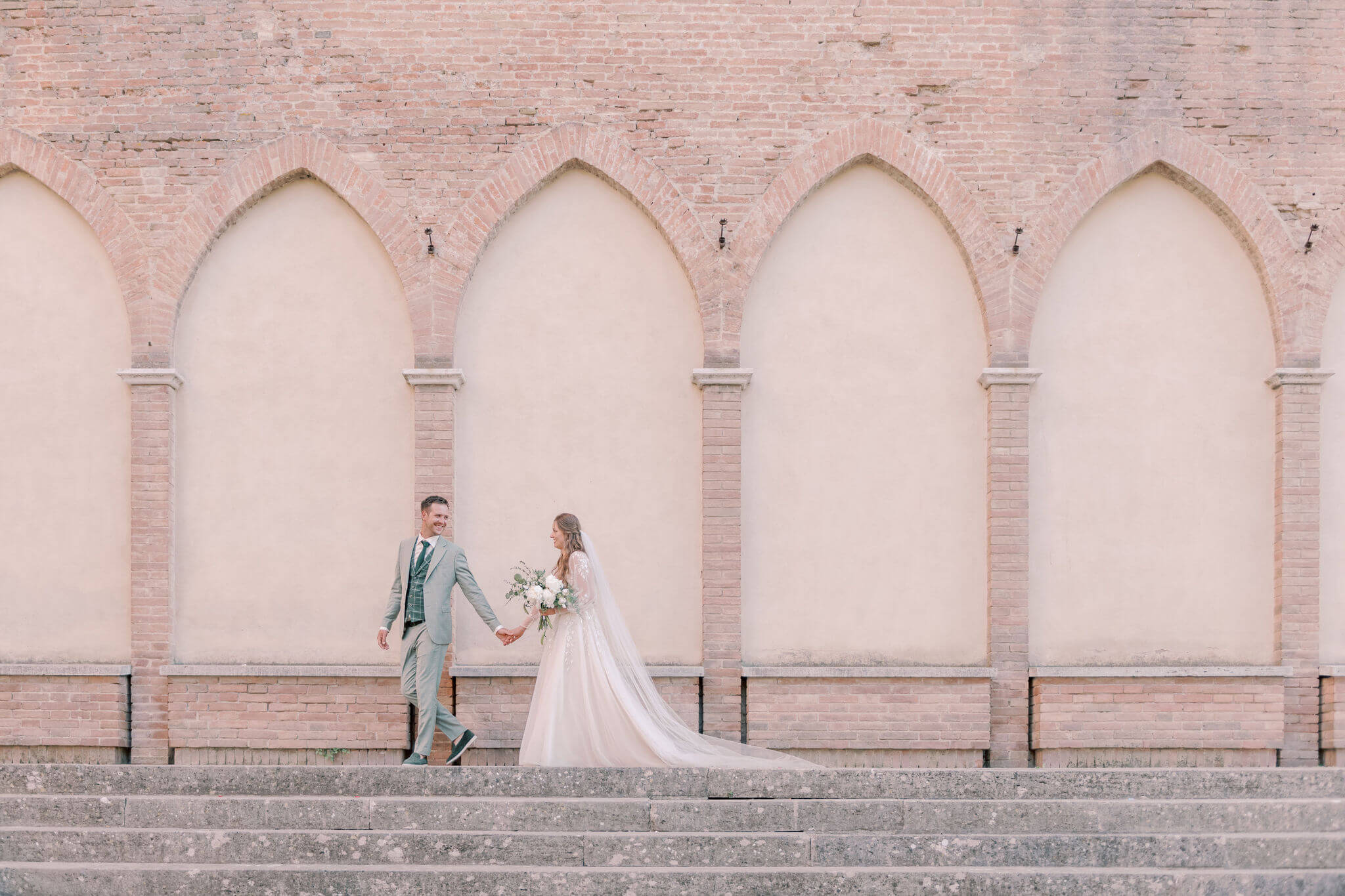
Dutch Wedding Tradition 1: The 1st Look
In The Netherlands it is tradition for the groom to pick up his bride at her parents house. What Americans and British people would refer to as the more recent trend of a first look before the ceremony (instead of both partners meeting each other at the end of the aisle during the wedding ceremony), has been the done thing in The Netherlands for ages. A Dutch first look usually takes place at the front door or at the end of a staircase, so not necessarily the most photogenic place you can imagine.
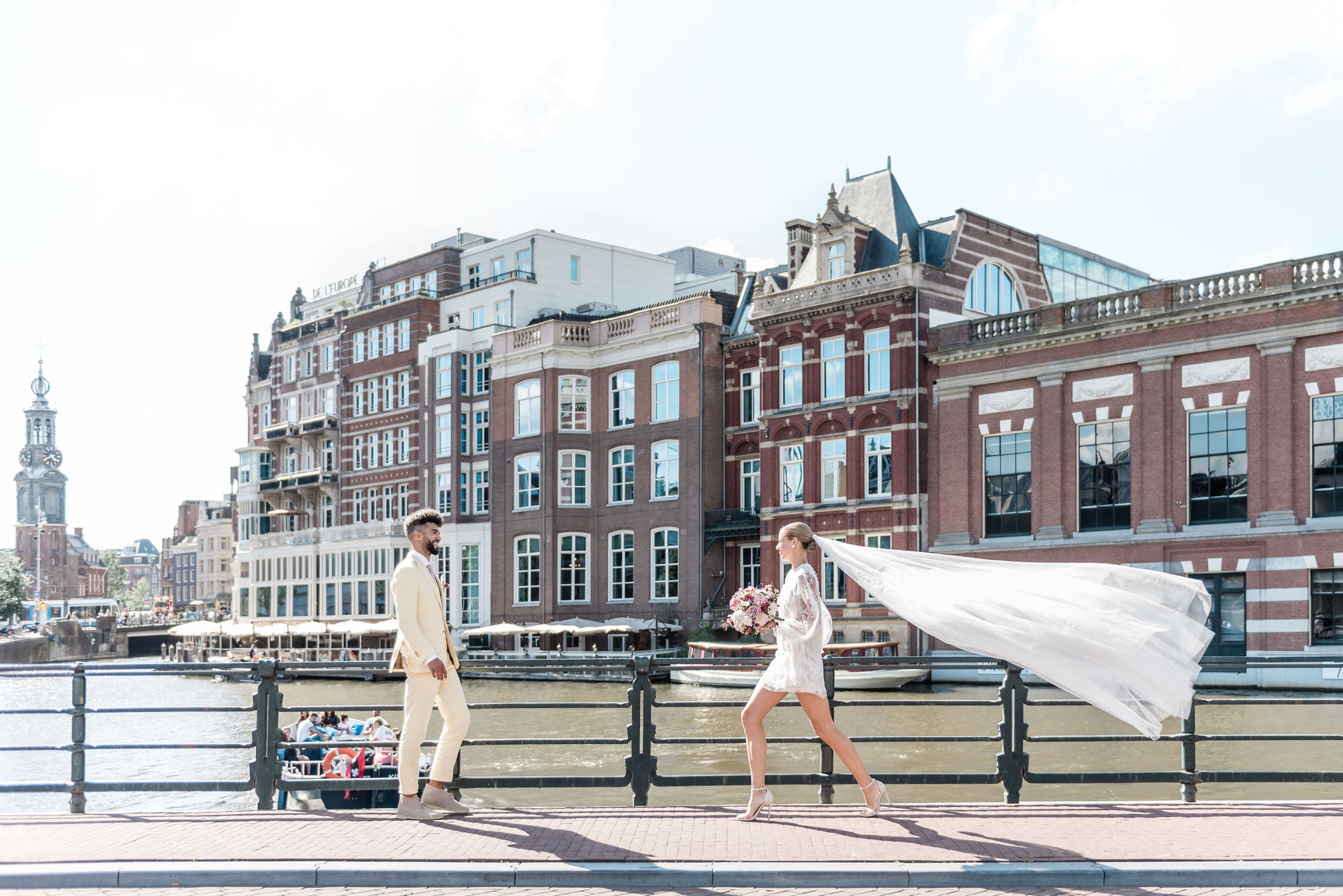
Dutch Wedding Traditions number 2: Bride's Bouquet Brought by the Groom
During the first look in The Netherlands it is customary for the groom to gift his bride her bouquet. According to tradition he has picked it out himself (although if you have some decent floral styling at your wedding I'm pretty sure you're floral designer will make sure the bridal bouquet is in tune with the other florals).
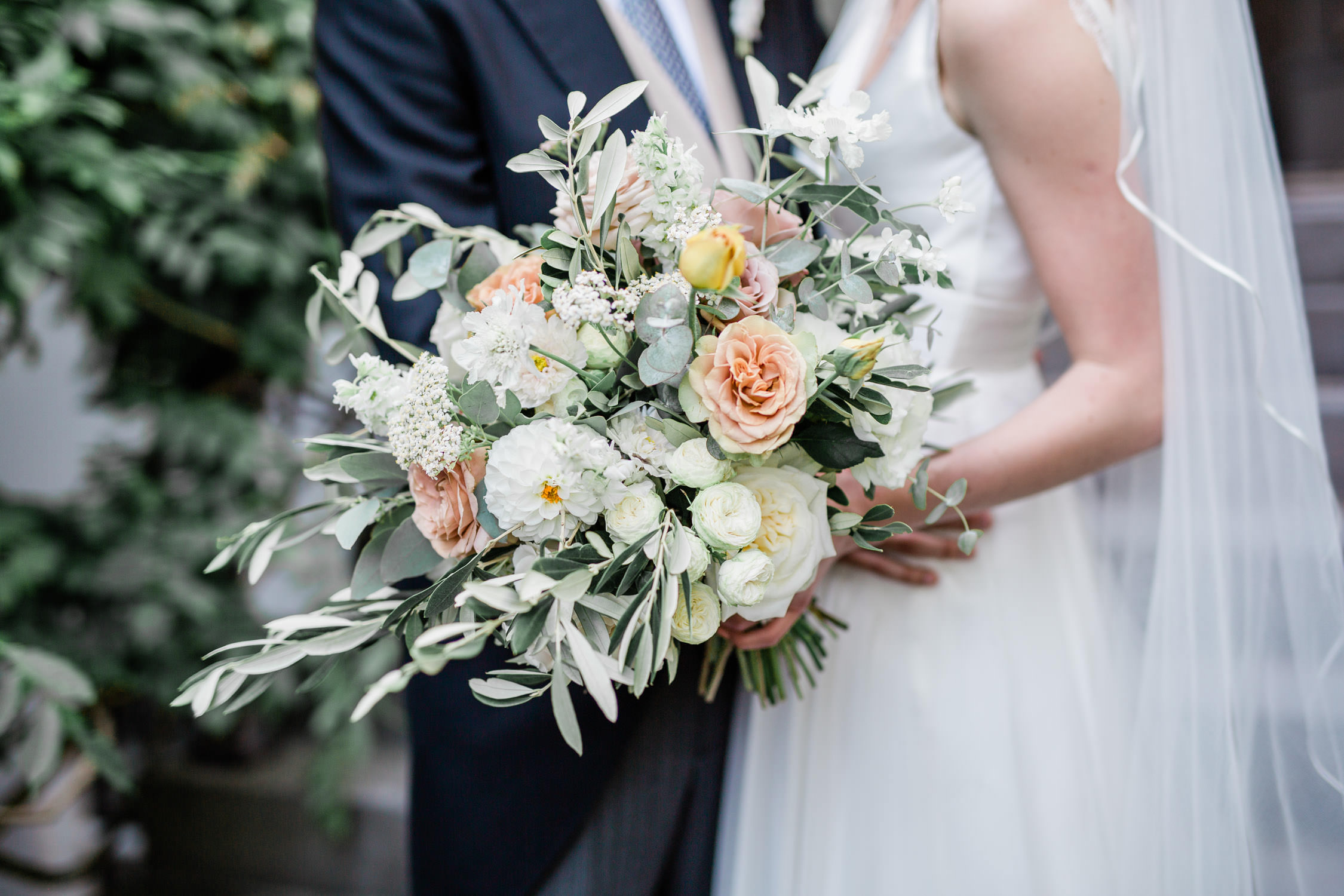
Dutch Wedding Tradition no 3: Long Ceremony With Life Stories
Where English and American wedding ceremonies tend to be short and sweet, the Dutch traditionally have wedding ceremonies of 60 to 120 minutes long. During these ceremonies there'll be funny moments as well as sad moments and the life stories of both partners are narrated by either the celebrant or a parent, close friend or sibling. Because the ceremony tends to be over an hour, the spouses to be and any members of the wedding party (in Holland witnesses are more common than bridesmaids or groomsmen) are seated after they have entered the ceremony space.
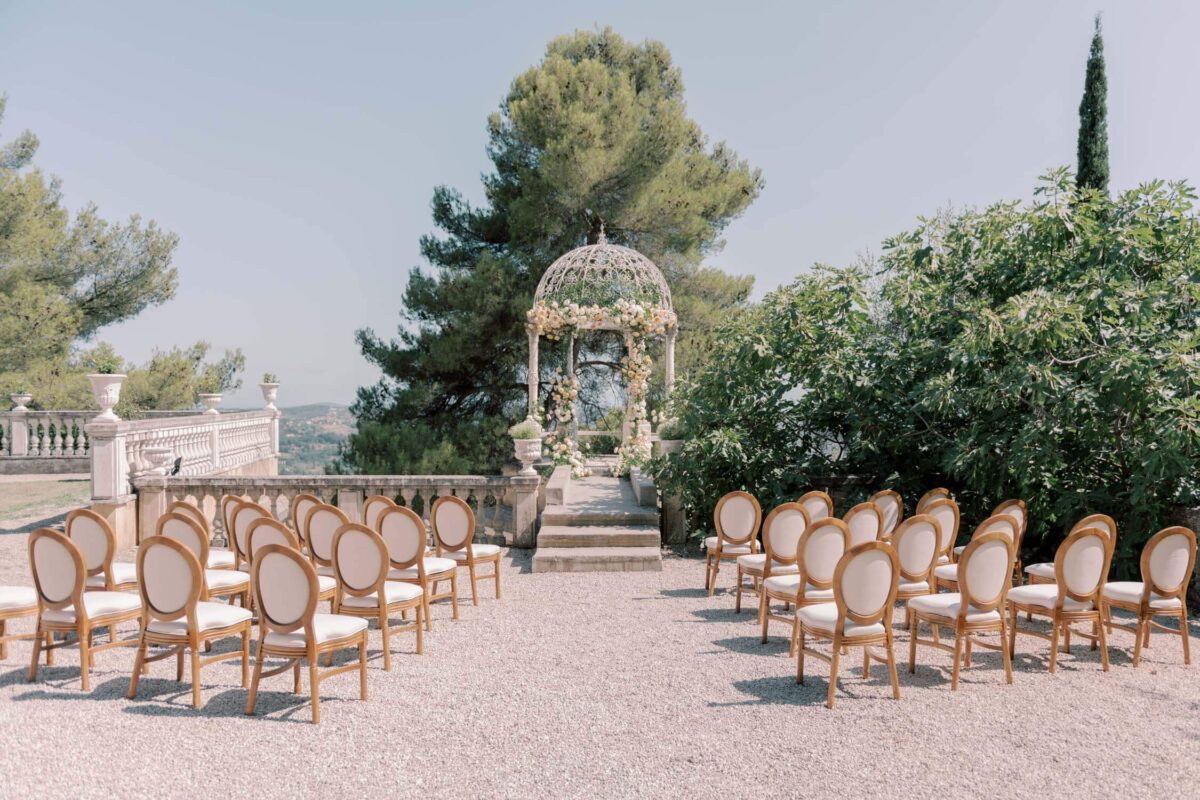
4th Dutch Wedding Tradition: 'Ceremoniemeester' and/or Witnesses Instead of the Wedding Party
For any Dutch readers thinking that a 'wedding party' mainly involves dancing, please read this Dutch article that explains what the English term 'wedding party' actually means. Asking friends or family members to be in your wedding party aka asking them to be your bridesmaid or groomsman isn't traditionally the done thing in The Netherlands. Furthermore the term 'bridesmaid' often causes a lot of confusion in The Netherlands actually. In Dutch a 'bridesmaid' is translated to 'bruidsmeisje', however a 'bruidsmeisje' would be a young girl and not, that is not until recently, an adult woman. A 'bruidsmeisje' therefore is what British or US citizens would call a flower girl. There are other honorary roles at Dutch weddings however.
Honorary Roles at a Dutch Wedding: The 'Ceremoniemeester' and the Witness
Dutch do however have a tradition more similar to the maid of honour/best man. Honorary roles within a Dutch wedding are the 'ceremoniemeester' (which can literally be translated as 'master of ceremonies' but the job is actually more similar to an unpaid wedding planner who happens to be a friend of the couple) and the witness. Every person who gets married in The Netherlands should have 1 but may have 2 witnesses. They will sign the register and promise to help the couple if any problems occure within the marriage. Although both are seen as honorary tasks, only performed by really dear friends and close family members, being a witness is a much more enjoyable task whereas being the 'ceremoniemeester' can be quit hard work. The witness has to sign the wedding registry, but apart from that they can enjoy the days festivities just like any wedding guest. A 'ceremoniemeester' can be a similarly simple task, for example they often might only be responsible for communicating the couple's wishes around any surprises their guests might have set up for the couple. But some Dutch 'ceremony masters' are not so lucky. Without a hired wedding planner the task is usually given to multiple people, who together will function as point of contact for all the wedding vendors, make sure any decorations are put in place (on time) and in general make sure the whole day goes smoothly. Tasks that ideally should be handled by an experienced professional. But in The Netherlands more often than not these tasks are dumped on the 'ceremoniemeester(s)'.
The American 'wedding party' tradition rising in The Netherlands
In recent years, under influence of Hollywood movies and television series, it has become more trendy to ask adult friends and family to be a bridesmaid/groomsman/maid of honour/best man/best woman/man of honour. However, as Dutch ceremonies do still average at 90 minutes long a Dutch wedding party is found seated instead of standing during the ceremony.
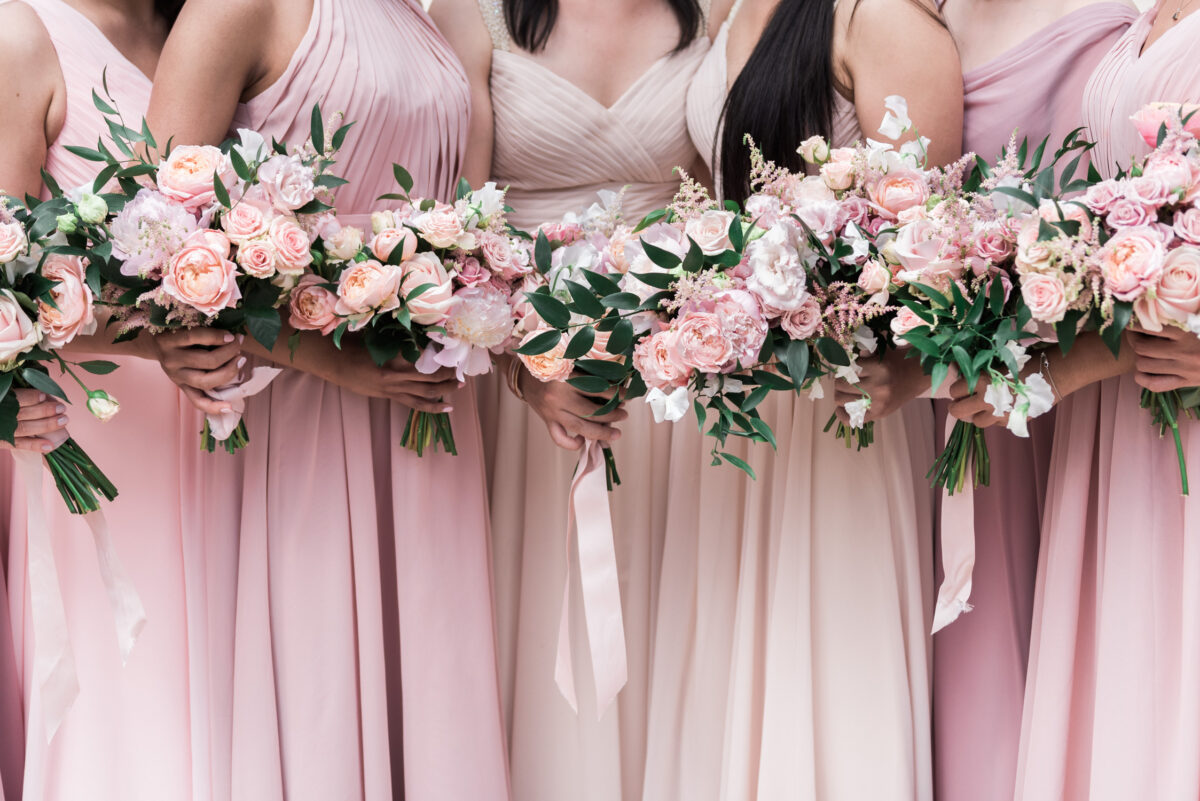
Fifth Wedding Tradition in The Netherlands: A Couple Photo Shoot Before the Ceremony
In The Netherlands it has somehow become customary to schedule a photo shoot for just the wedding couple just before the ceremony takes places, although if the ceremony is scheduled rather early in the day (for example forced by the availability of the city hall) this does occasionally get scheduled after the ceremony instead. I can only imagine some influential photographers in the 60s or 70s pushing couples to schedule these photos at the time that clothing, make-up and hair still looked fresh. And because Dutch people always used to have a 1st look, it only makes sense to do portraits directly after that. Before sweat and tears throughout the wedding day have done their worst. However, nowadays hair and makeup stylists often provide multiple touch up moments throughout the day and even without that, modern makeup tends to stay in place a lot better than 50 years ago. Therefore, I personally prefer to plan a couple photo shoot during the best light of the day, during sunset. During which light is more filtered, less harsh, the sky might have beautiful colouring and landscapes and backdrops are looking their best.
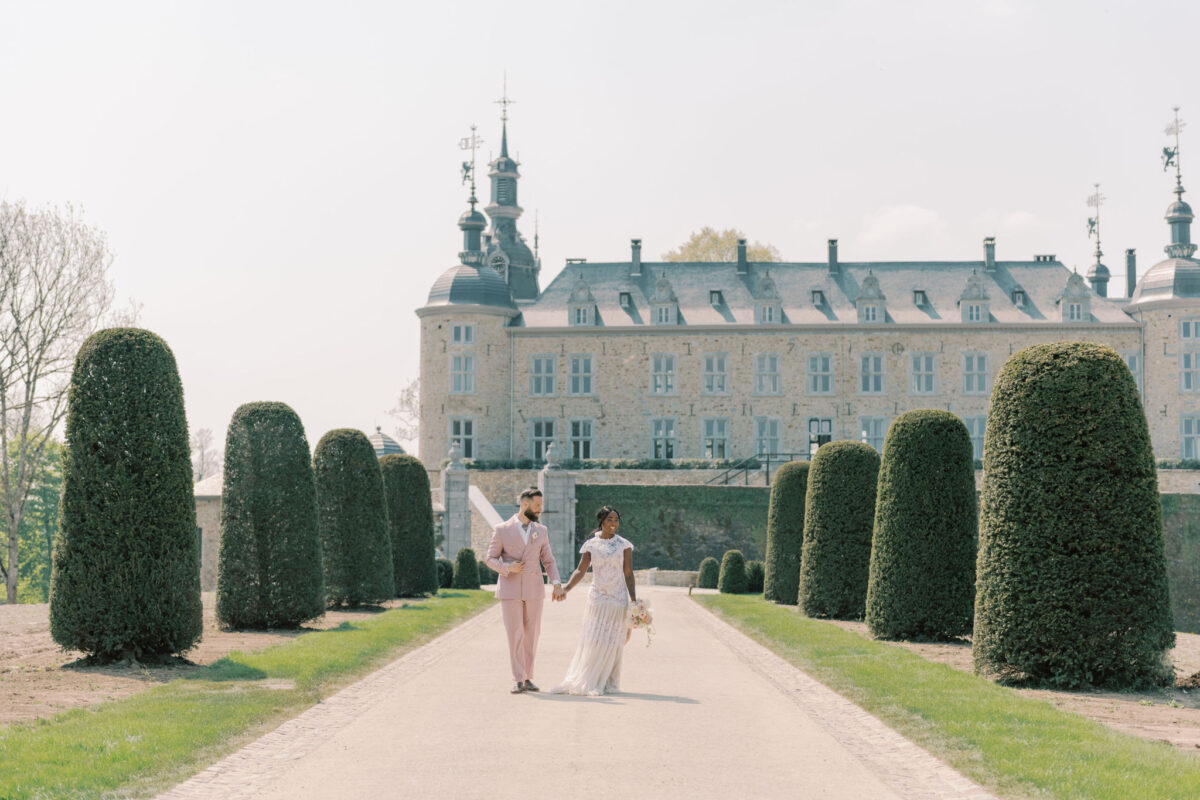
The Ultimate Budget Tradition The Dutch Love: You're (Partly) Invited!
If you're not Dutch and have ever been invited to a Dutch wedding, you might have been surprised by the invite. In The Netherlands it is more often than not the case that the majority of guests are only invited for certain parts of the wedding day. For example you might be invited to attend the ceremony and also be welcome for drinks and dancing, but in between these 2 events there is likely a 2 or 3 hour gap. During this time, the dinner takes place and you're not invited and left to find your own dinner. If you're a colleague for example you might only be invited for the evening (dancing and, usually, an open bar). And as a distant relative you might be invited to the church ceremony and the dancing in the evening, but not be invited to the legal ceremony taking place before the church ceremony (in The Netherlands you can only have a religious wedding ceremony after you have been officially married by a government appointed celebrant or civil servant. Getting married in a church without having been married in a civil ceremony first, is illegal). In some Dutch municipalities it is now possible to include a civil ceremony into a religious ceremony. The legal part still needs to take place first but it makes it possible to have the official bit take place in a church too.
Of course some Dutch weddings have the same amount of guests throughout the day. But a lot of Dutch weddings have a timeline with different amounts of attendees throughout the day. This is what a traditional Dutch wedding, generally speaking, looks like:
Getting ready: Dutch weddings usually start with getting ready, this sometimes includes a best friend or a witness. But just as often there's only parents and siblings present or the bride/groom simply gets ready on their own with just a hair and makeup professional in the room.
1st look: after the getting ready it is time for the groom to pick up the bride at her parents house. They see each other at the door and the groom hands the bride her bridal bouquet. The wedding couple drive off together in their wedding car. Often they schedule in a photo shoot at his time. Apart from a photographer there's no guests present at that time. Occasionally 1 witness or 'ceremoniemeester' joins them to lend a hand or as a means of communication, but this is more often because they are the driver of the wedding car than anything else.
Ceremony: If a couple are religious they will need to have a civil ceremony first before they can legally start their religious wedding ceremony. In a Dutch church usually all guests are welcome. However, civil ceremonies tend to have a limited number of seats and in a city hall ceremony it isn't uncommon for the majority of guests having to stand. When a wedding venue is hired for the civil ceremony it is usually a long ceremony and everyone whose invited will have a place to sit. The number of guests is often confined to friends and family. Colleagues and more distant relatives are often left off the guest list for this part of the day. On average a non-religious ceremony includes between 50 and 100 guest.
Reception: The Dutch 'reception' only consists of drinks, cake cutting and often starts with a receiving line. It is often only attended by the "ceremony guests", but occasionally is opened up to more guests than that. A Dutch wedding reception does not include dancing or dinner.
Dinner: During dinner the couple might have dinner on their own, invite only direct family (parents and siblings) or invite everyone. But the latter is definitely not the most common. Any Dutch couple getting married on a budget, will cut out inviting any guests for their wedding dinner. Even the people who they consider 'day guests' (people who are invited to all the festivities throughout the day), might be left out of joining them for dinner.
Dancing: Although in The Netherlands having dinner without guests might be the most commonly made budget cut, Dutch people do usually provide an open bar for everyone invited for dancing, including for their "evening guests". "Evening guests" are guests who are only invited to join for the festivities taking place after dinner. On average between 70 and 200 people are invited for this portion of the wedding.
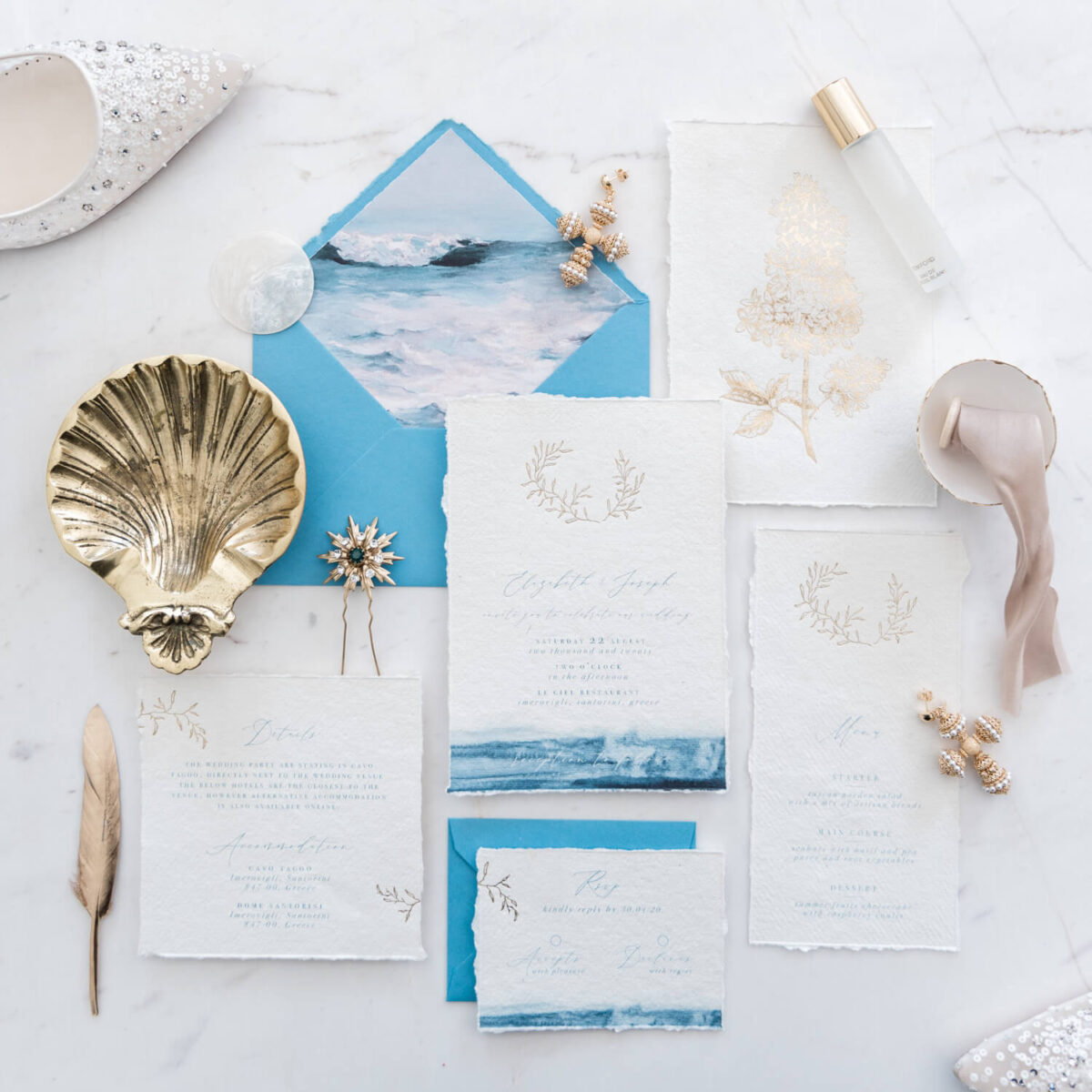
Possibly the most hated Wedding Tradition in Holland: 'Stukjes'
More and more couples communicate strict rules to their loved ones about not allowing any 'stukjes' (literally translates to pieces, derived from 'theaterstuk' (in English: 'theater piece'). In The Netherlands it is customary to surprise the bride and groom with songs or short sketches created by the guests and usually describing the couple, their relationship, their individual life stories or their former love lives. They usually make fun of the newlyweds, but the reason a lot of people hate them is their quality. As they are home made they are more often than not boring, badly written, badly sung and usually only fun for the person who is performing (although it is often done by little groups, so there's always a couple of "performers" who are doing so out of pure duty and many a guest has broken out in sweat while giving a forced performance). Worst still, with the 'pieces' becoming less popular, the options for different variations of them are getting forgotten. So out of shear lack of creativity, the most common 'piece' has now long since been the long and most often unfunny A-B-C. In which every letter of the alphabet is given a word that has a connection to the newlyweds. A is for Aberdeen, the place where they met. B is for Bride, isn't X the most beautiful bride you've ever seen? C is for Christmas Eve, the day that X proposed. 26 letters is a long list when it consists of uninspired writing and as a last resort incorporates sexual references in an attempt to make 1 or 2 people laugh. But when done right, by talented people, "pieces" can become an amazing memory! As a lover of all things theater myself, I love live performances at a wedding even if done by amateurs. If it's done with love (as opposed to for making fun of people or to get a cheap laugh) and enthusiasm it can be wonderful. I suspect that bad writers, in the case of this tradition, have ruined it for the great writers amongst the Dutch.
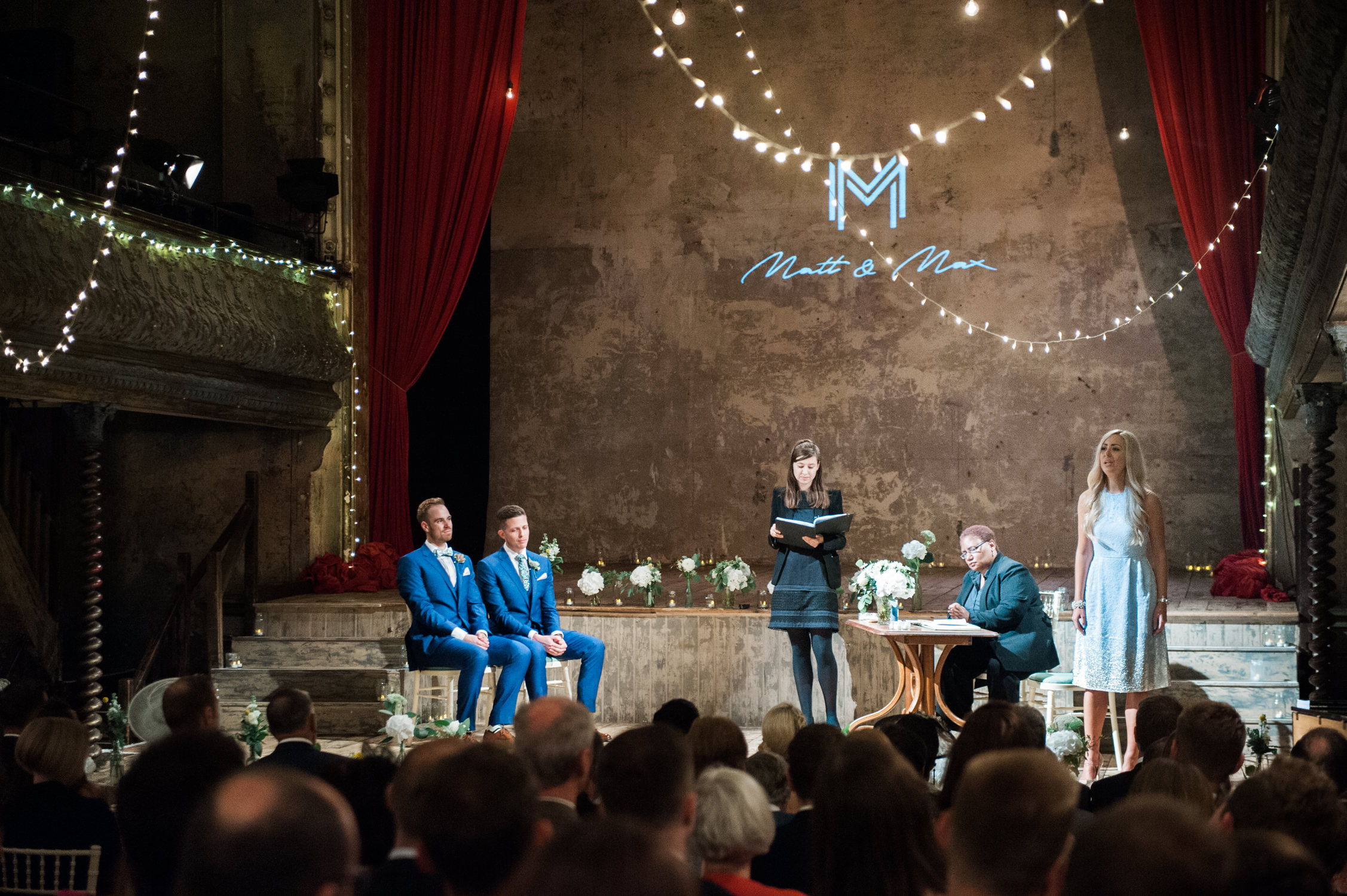
Sugared Almonds for the Drive Home
It is customary to give a small present when the guests leave. The tradition is getting more versatile these days, with all kind of different presents being chosen. Nowadays, the little tokens are often adapted to the style or theme of the wedding. For an Italian destination wedding they might gift little bottles of olive oil for example. The traditional Dutch gift is getting less popular but in accordance with Dutch wedding traditions the parting gift used to consist of a couple (sometimes up to 5 pieces but usually 2) of sugar coated almonds in a little pouch or paper box, often accompanied by a label stating "thank you for coming". These are referred to as 'bruidssuiker' (bridal sugar).
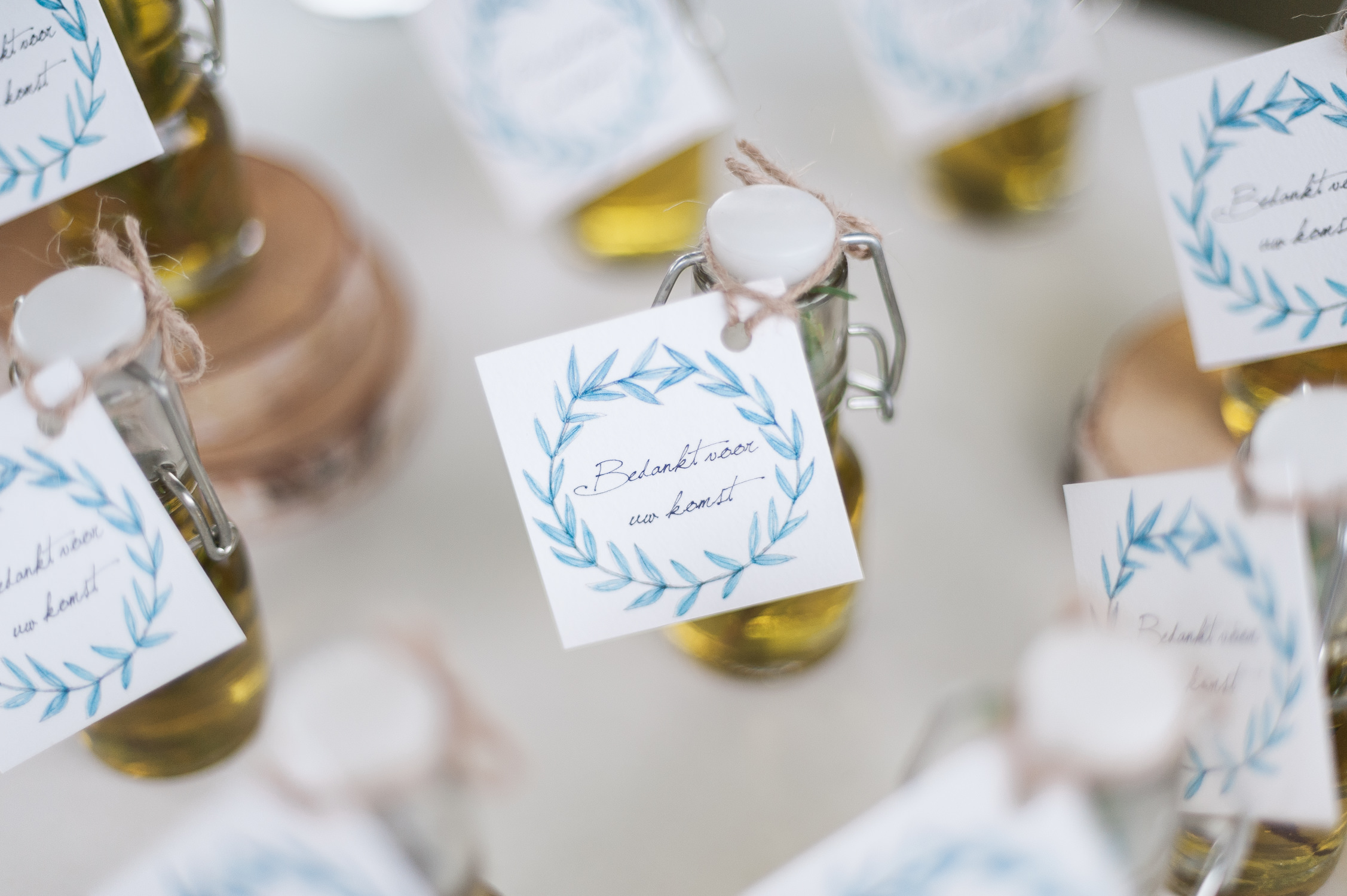
Cake Cutting per Dutch Tradition is Directly After the Wedding Ceremony
This might be my favourite Dutch wedding tradition and if I'm perfectly honest I really don't understand why it isn't embraced by everyone. Thrifty as they are, the Dutch don't want a good cake to go to waste and so they plan the cake cutting and eating of the cake at a moment when everyone can appreciate a bite. After a long ceremony everyone can appreciate a drink and a bit, so this is the perfect moment to serve the wedding cake. I can totally see the benefit of using the wedding cake a dessert during dinner (then again, Dutch weddings often forego a dinner with a lot of guests included, so that would result in very small wedding cakes). But I am a bit baffled whenever I see a huge wedding cake being served after a dessert. These tend to be luxurious dinners as well, with fine food served in multiple courses. The guests tend to be quite stuffed at that point though, so many guests don't fancy a piece of cake at that time. The Dutch timing of the wedding cake makes much more sense, right?
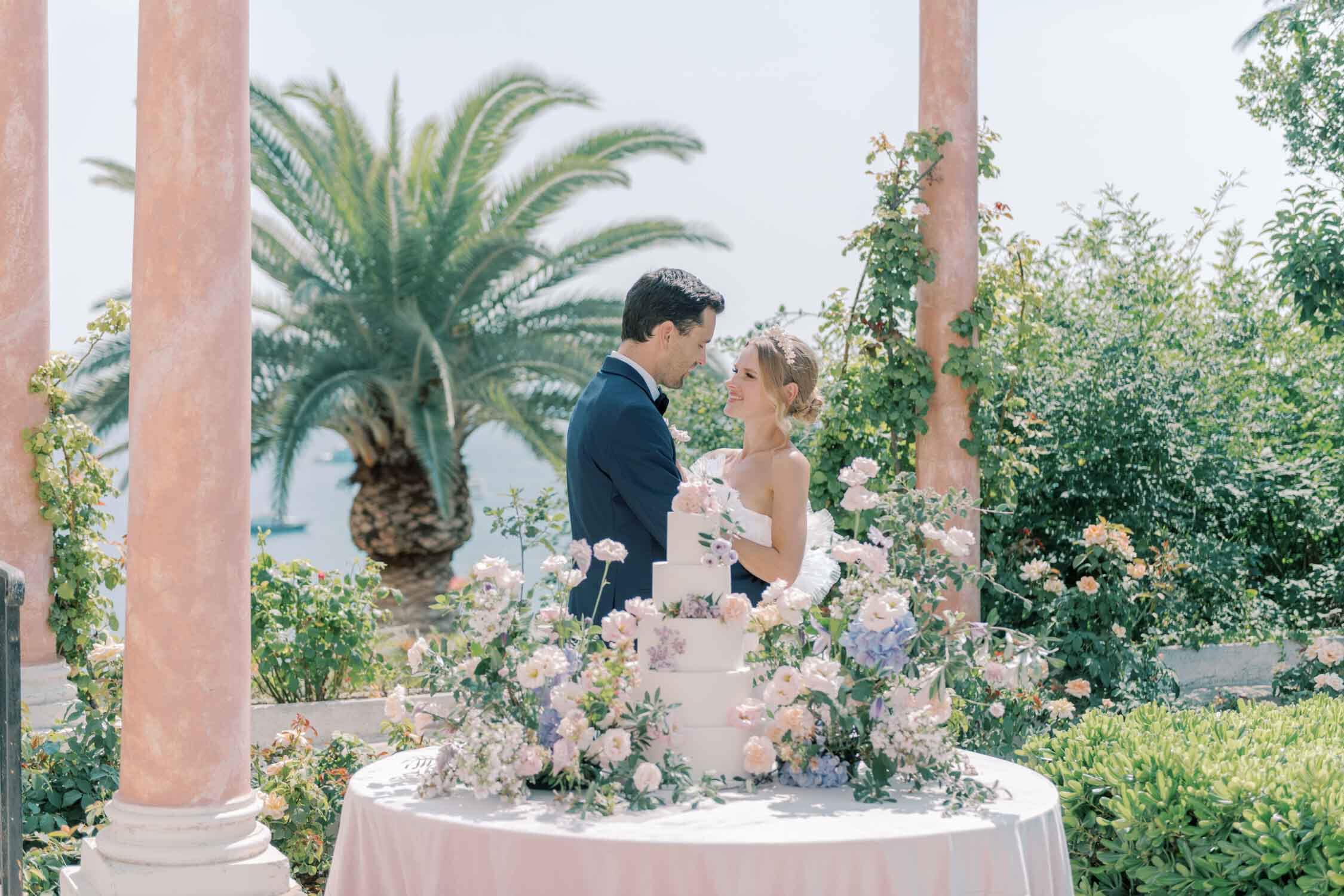
'Trouwstoet': the Processional of Cars
In a traditional wedding in Holland the couple and their guests will travel to and from the wedding ceremony in a procession of cars. In the front is the car with the bride and groom (as they have had their first look, they are not seeing each other for the first time at the ceremony), followed by the cars with their parents and witnesses and then all the other cars follow. While during the getting ready there usually aren't a lot of people around, the guests traditionally do gather at the house of the bride's parents (where she's getting ready). They gather at the front door when the groom rings the bell and the first look takes place. Then everyone drives to the ceremony in a processional. All the cars in the processional have a ribbon (or a similar decoration) attached (often on the antenna), so that all other traffic can see that it is a processional. It is customary to give way to all the cars in the processional, so that they can drive together.
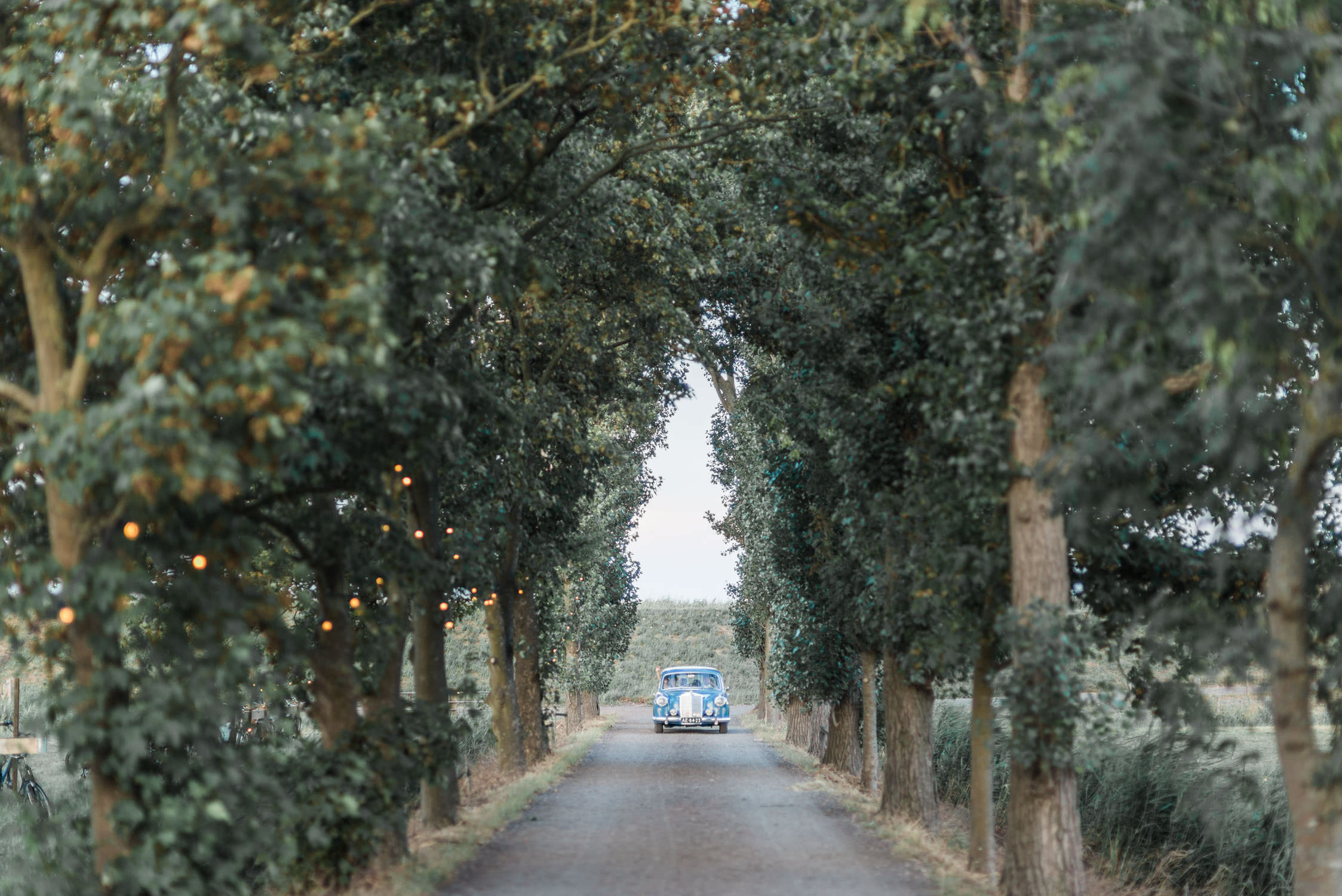
Are you planning to incorporate Dutch wedding traditions into your wedding? Which ones are your favourite wedding traditions from The Netherlands? Would you like to hire an internationally acclaimed destination wedding photographer who is familiar with Dutch wedding traditions? Don't hesitate to ask me about my availability for your wedding date.
Save this post to your Pinterest board:
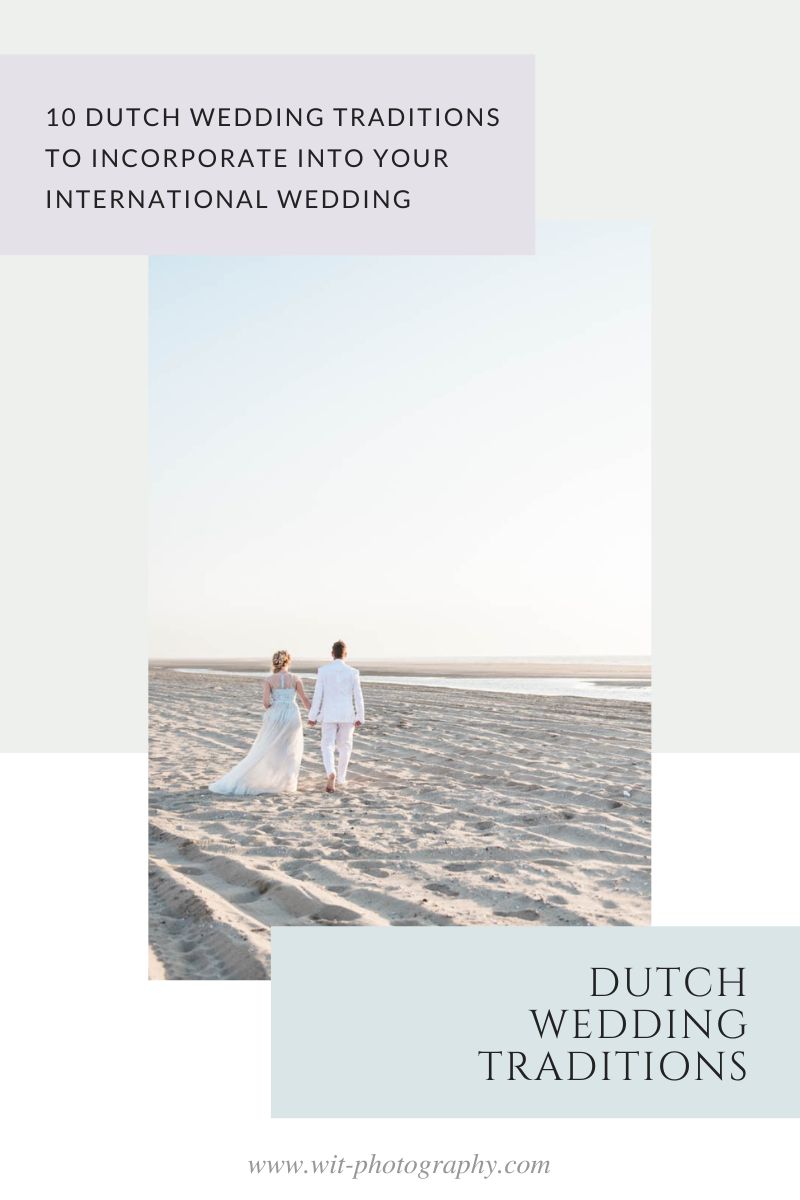
Share this story
